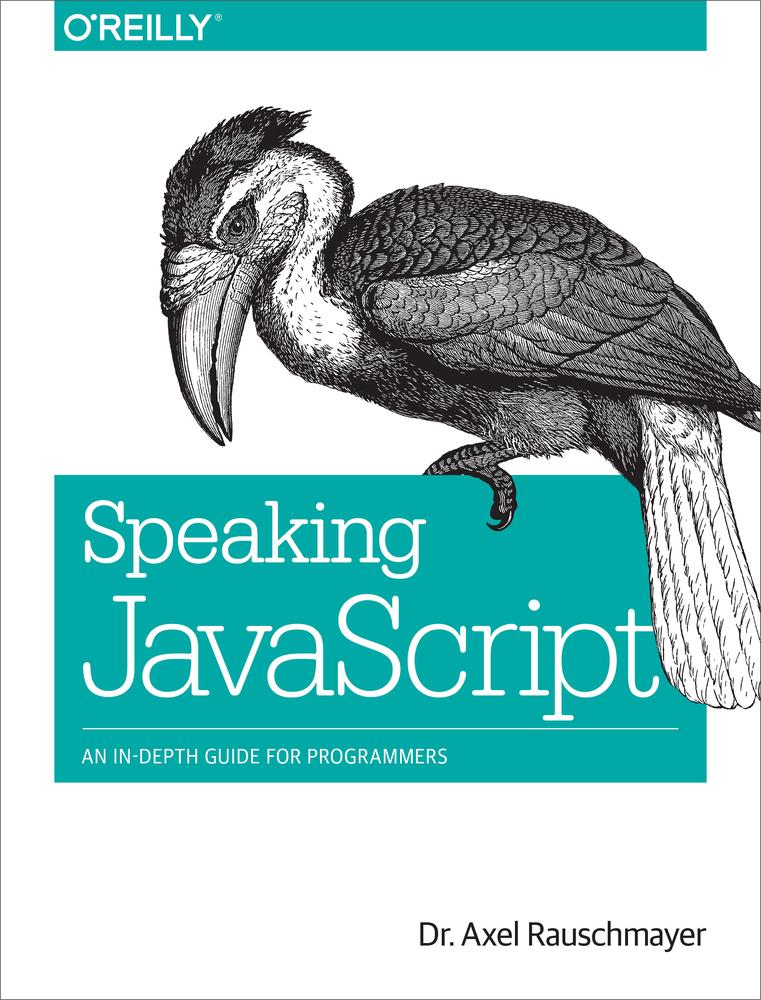
Table of contents
- Praise for Speaking JavaScript
- Preface
- I. JavaScript Quick Start
- II. Background
- III. JavaScript in Depth
- 7. JavaScript’s Syntax
- An Overview of the Syntax
- Comments
- Expressions Versus Statements
- Control Flow Statements and Blocks
- Rules for Using Semicolons
- Legal Identifiers
- Invoking Methods on Number Literals
- Strict Mode
- Switching on Strict Mode
- Strict Mode: Recommended, with Caveats
- Variables Must Be Declared in Strict Mode
- Functions in Strict Mode
- Setting and Deleting Immutable Properties Fails with an Exception in Strict Mode
- Unqualified Identifiers Can’t Be Deleted in Strict Mode
- eval() Is Cleaner in Strict Mode
- Features That Are Forbidden in Strict Mode
- 8. Values
- 9. Operators
- 10. Booleans
- 11. Numbers
- Number Literals
- Converting to Number
- Special Number Values
- The Internal Representation of Numbers
- Handling Rounding Errors
- Integers in JavaScript
- Converting to Integer
- Arithmetic Operators
- Bitwise Operators
- The Function Number
- Number Constructor Properties
- Number Prototype Methods
- Functions for Numbers
- Sources for This Chapter
- 12. Strings
- 13. Statements
- 14. Exception Handling
- 15. Functions
- The Three Roles of Functions in JavaScript
- Terminology: “Parameter” Versus “Argument”
- Defining Functions
- Hoisting
- The Name of a Function
- Which Is Better: A Function Declaration or a Function Expression?
- More Control over Function Calls: call(), apply(), and bind()
- Handling Missing or Extra Parameters
- Named Parameters
- 16. Variables: Scopes, Environments, and Closures
- Declaring a Variable
- Background: Static Versus Dynamic
- Background: The Scope of a Variable
- Variables Are Function-Scoped
- Variable Declarations Are Hoisted
- Introducing a New Scope via an IIFE
- Global Variables
- The Global Object
- Environments: Managing Variables
- Closures: Functions Stay Connected to Their Birth Scopes
- 17. Objects and Inheritance
- Layer 1: Single Objects
- Converting Any Value to an Object
- this as an Implicit Parameter of Functions and Methods
- Layer 2: The Prototype Relationship Between Objects
- Iteration and Detection of Properties
- Best Practices: Iterating over Own Properties
- Accessors (Getters and Setters)
- Property Attributes and Property Descriptors
- Protecting Objects
- Layer 3: Constructors—Factories for Instances
- Data in Prototype Properties
- Keeping Data Private
- Layer 4: Inheritance Between Constructors
- Inheriting Instance Properties
- Inheriting Prototype Properties
- Ensuring That instanceof Works
- Overriding a Method
- Making a Supercall
- Avoiding Hardcoding the Name of the Superconstructor
- Example: Constructor Inheritance in Use
- Example: The Inheritance Hierarchy of Built-in Constructors
- Antipattern: The Prototype Is an Instance of the Superconstructor
- Methods of All Objects
- Generic Methods: Borrowing Methods from Prototypes
- Pitfalls: Using an Object as a Map
- Cheat Sheet: Working with Objects
- 18. Arrays
- Overview
- Creating Arrays
- Array Indices
- length
- Holes in Arrays
- Array Constructor Method
- Array Prototype Methods
- Adding and Removing Elements (Destructive)
- Sorting and Reversing Elements (Destructive)
- Concatenating, Slicing, Joining (Nondestructive)
- Searching for Values (Nondestructive)
- Iteration (Nondestructive)
- Pitfall: Array-Like Objects
- Best Practices: Iterating over Arrays
- 19. Regular Expressions
- Regular Expression Syntax
- Unicode and Regular Expressions
- Creating a Regular Expression
- RegExp.prototype.test: Is There a Match?
- String.prototype.search: At What Index Is There a Match?
- RegExp.prototype.exec: Capture Groups
- String.prototype.match: Capture Groups or Return All Matching Substrings
- String.prototype.replace: Search and Replace
- Problems with the Flag /g
- Tips and Tricks
- Regular Expression Cheat Sheet
- 20. Dates
- 21. Math
- 22. JSON
- 23. Standard Global Variables
- 24. Unicode and JavaScript
- 25. New in ECMAScript 5
- 7. JavaScript’s Syntax
- IV. Tips, Tools, and Libraries
- 26. A Meta Code Style Guide
- 27. Language Mechanisms for Debugging
- 28. Subclassing Built-ins
- 29. JSDoc: Generating API Documentation
- 30. Libraries
- 31. Module Systems and Package Managers
- 32. More Tools
- 33. What to Do Next
- Index
- About the Author
- Colophon
- Copyright